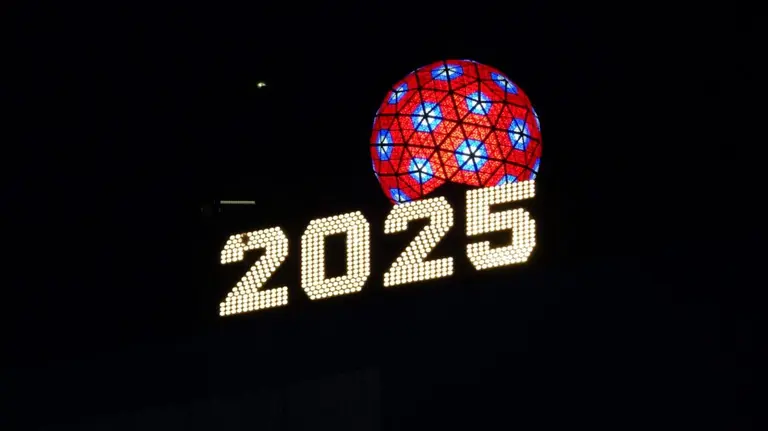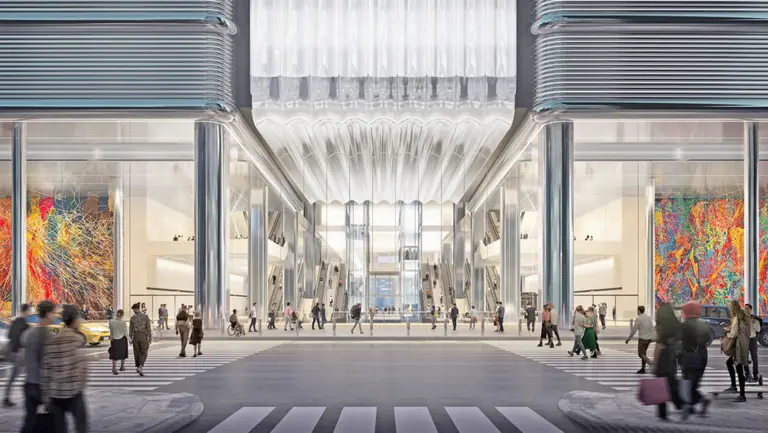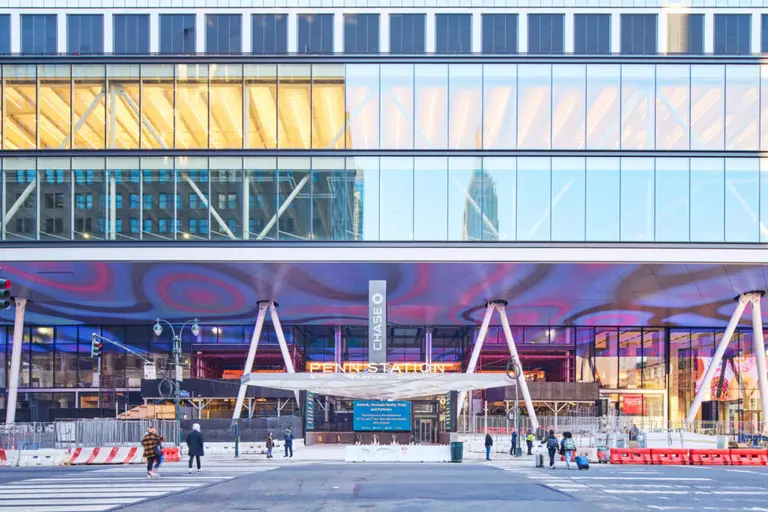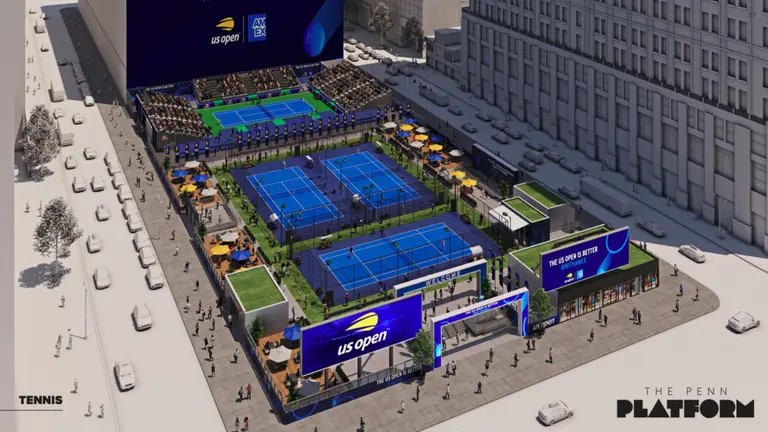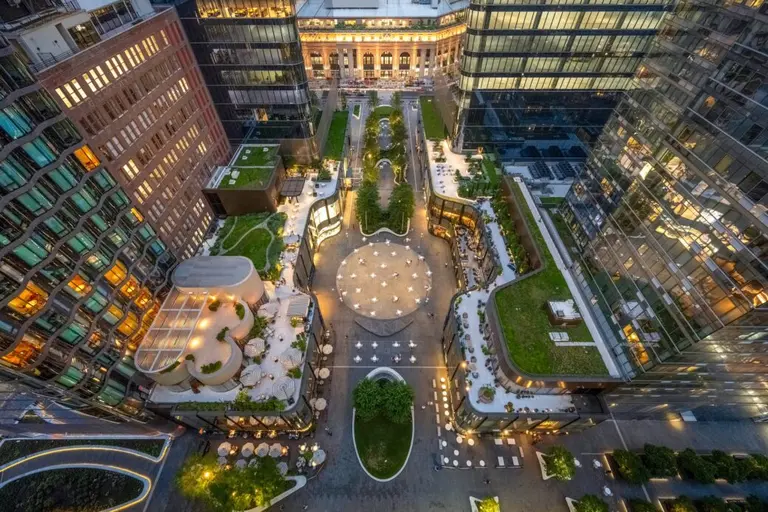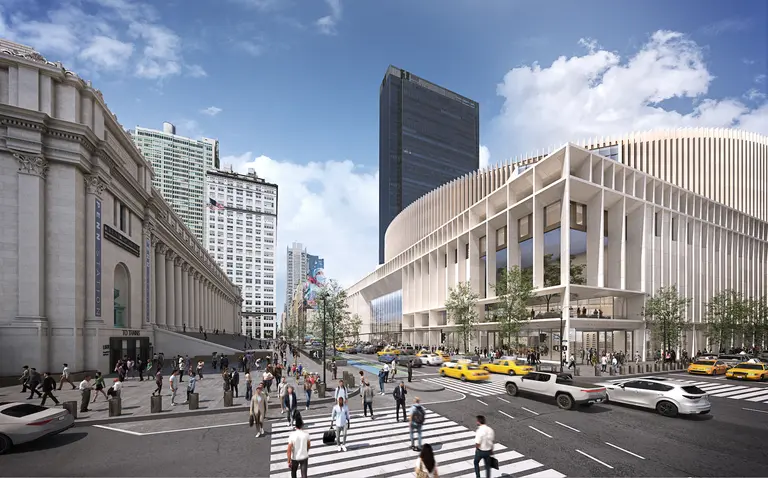Pepsodent, Camel, and Yashica: The Ads and Architecture of Old Times Square
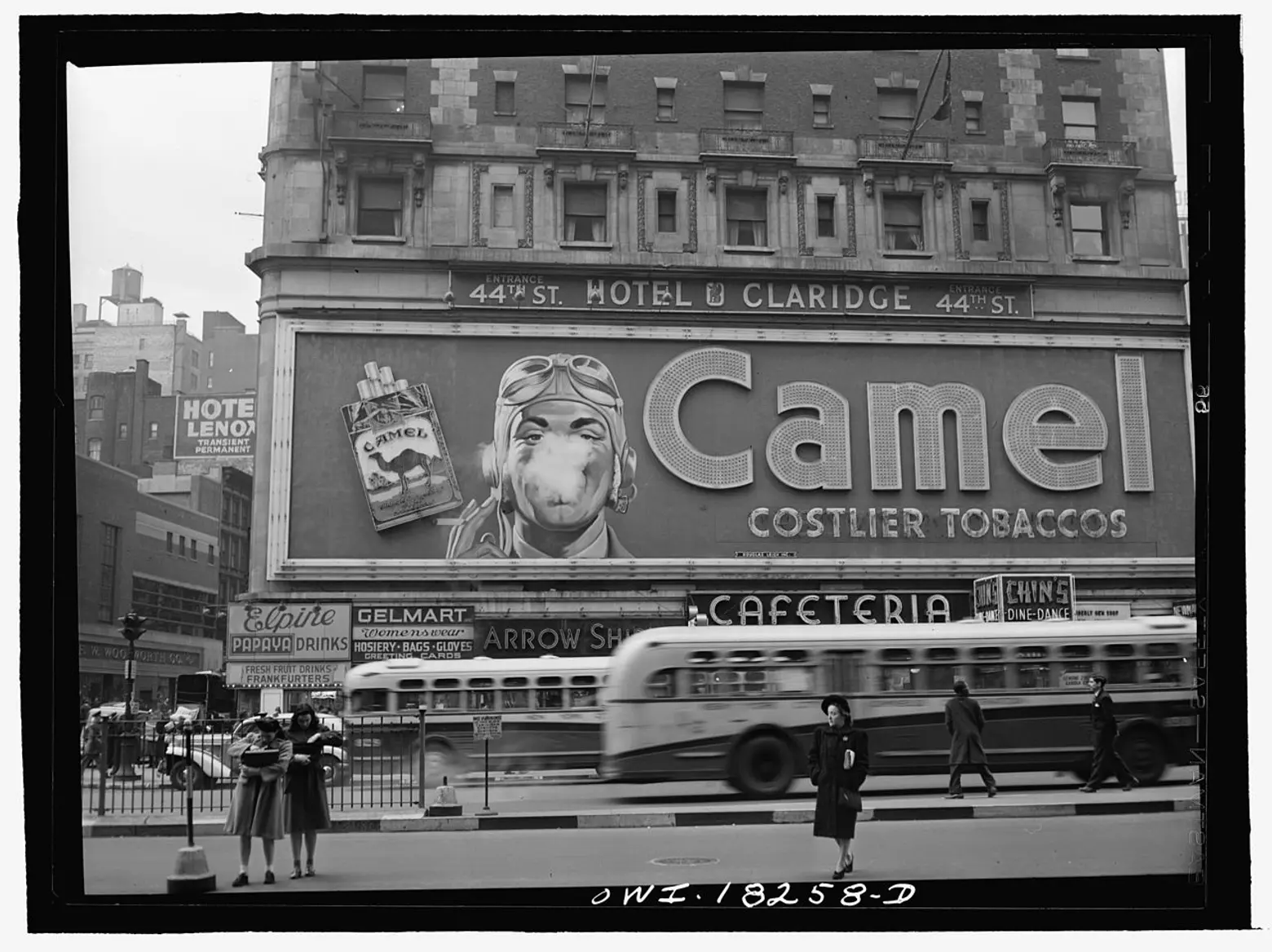
Everyone has an opinion on the ways Times Square has changed over the decades, but the basic look has been a different variation on the same theme since the late 19th century: Classic architecture covered in gigantic advertisements. Take a trip back in time with us through some pictures ahead—you might be surprised by what kinds of things used to be displayed in this Midtown hub.
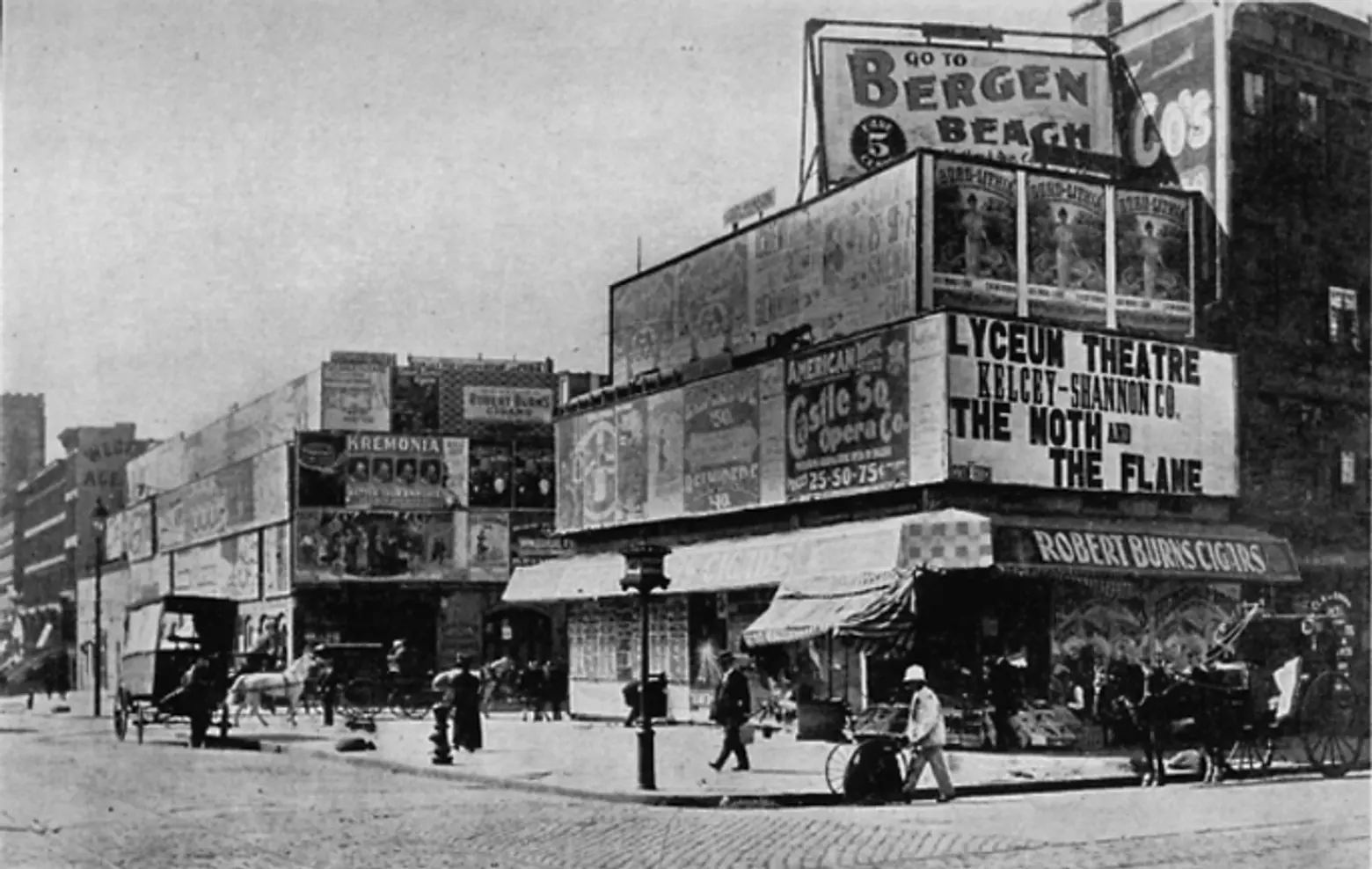 Image cc
Image cc
The 1880s
Before The New York Times moved in, “Times Square” was “Longacre Square.” In the 1870s, the intersection of Broadway and 42nd was the hub of New York’s carriage trade, so the area was named after London’s carriage sales sector, Long Acre. And from the very start, the area was distinctly covered in billboard advertisements, as you can see in the picture above.
Scottish poetry fans were implored to smoke Robert Burns Cigars. Bergen Beach, Brooklyn asked kindly for a few visitors from Manhattan. And the Lyceum Theatre (not the one that’s currently putting on The Realistic Joneses, but one that was demolished to make way for the Met Life Tower) was advertising Clyde Fitch’s The Moth and the Flame. Incredibly, advertising in Times Square actually predates Times Square.
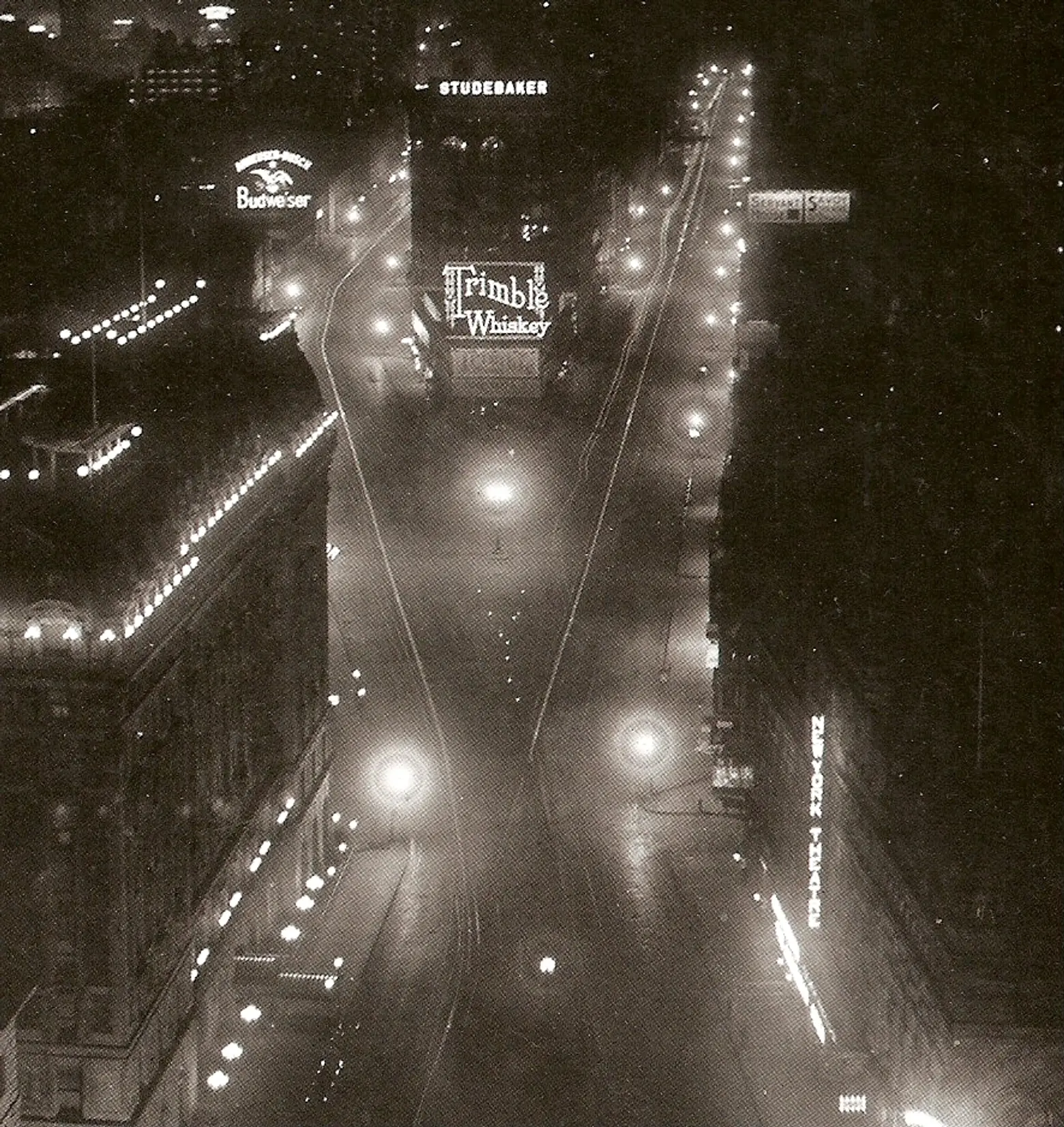 Image cc
Image cc
The Turn of the Century
The first electrified advertisement was installed in Times Square in 1904, and the trend caught on fast. The picture above was taken from on top of Times Tower in 1904, showing the early adopters of electric ads: Trimble Whiskey, Budweiser, and Studebaker wagons.
The long, straight avenues and heavy trolley and subway traffic made Times Square the most prized place for advertising. Times Square was also already living up to its reputation for creating moral panic: A huge Times Square ad for ladies’ corsets was a talking point of the day.
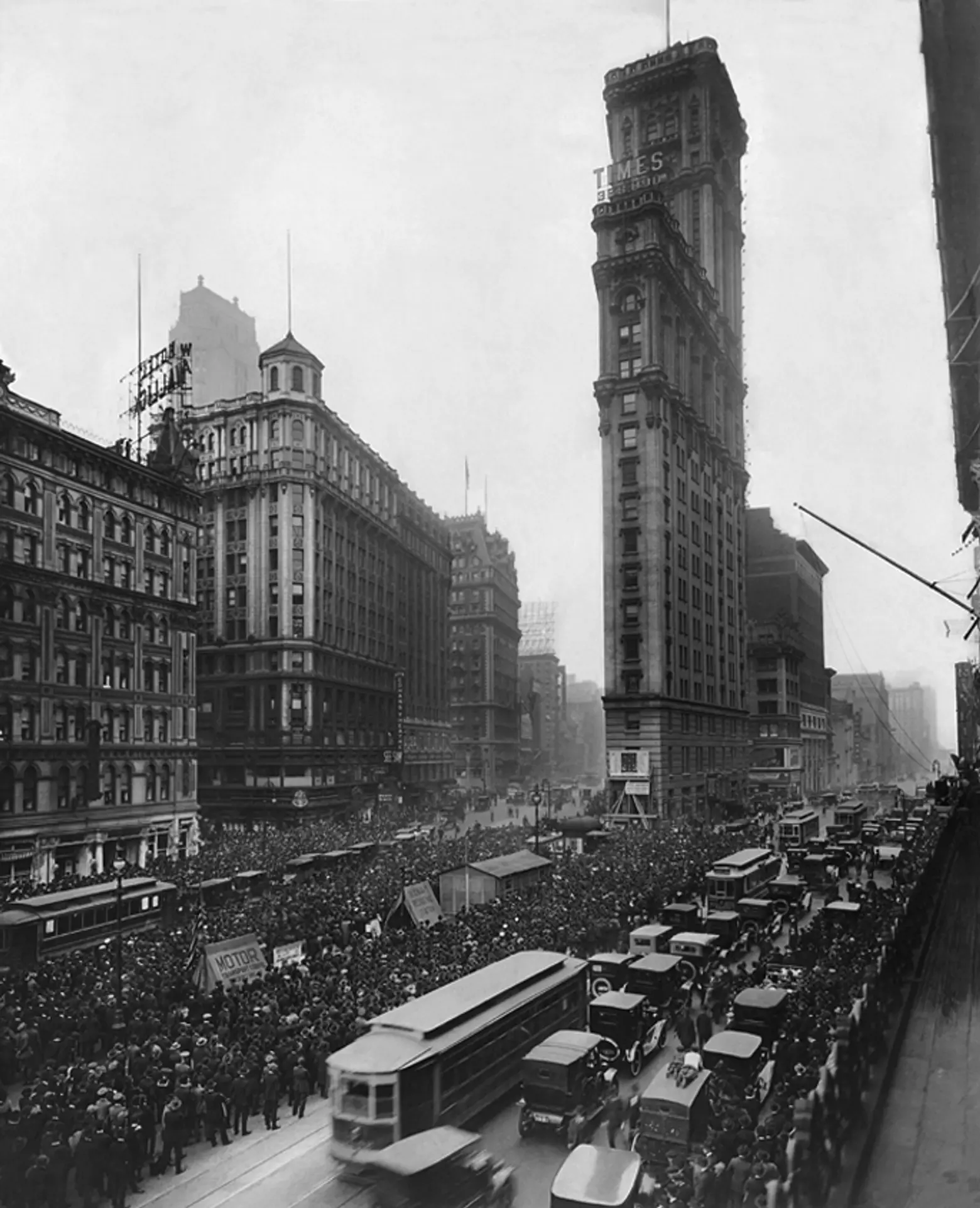 Image cc
Image cc
The 1910s
This photo shows a crowd gathered to hear updates on the 1919 World Series, which would eventually become infamous for the Black Sox Scandal. The space is relatively free of advertising here, but this photo is incredible for giving us a look at a completely naked One Times Square building. This is the very same building that houses Coca-Cola ads and giant jumbotrons today, in all its intended architectural glory.
 Image cc
Image cc
The 1940s
You can’t talk about classic Times Square advertising without bringing up Camel’s smoking billboard. This photo is from 1943, but the billboard was up and functioning for decades. The smoking face changed over time, but this being wartime, the smoker enjoying the “Costlier Tobaccos” of Camel is an army pilot.
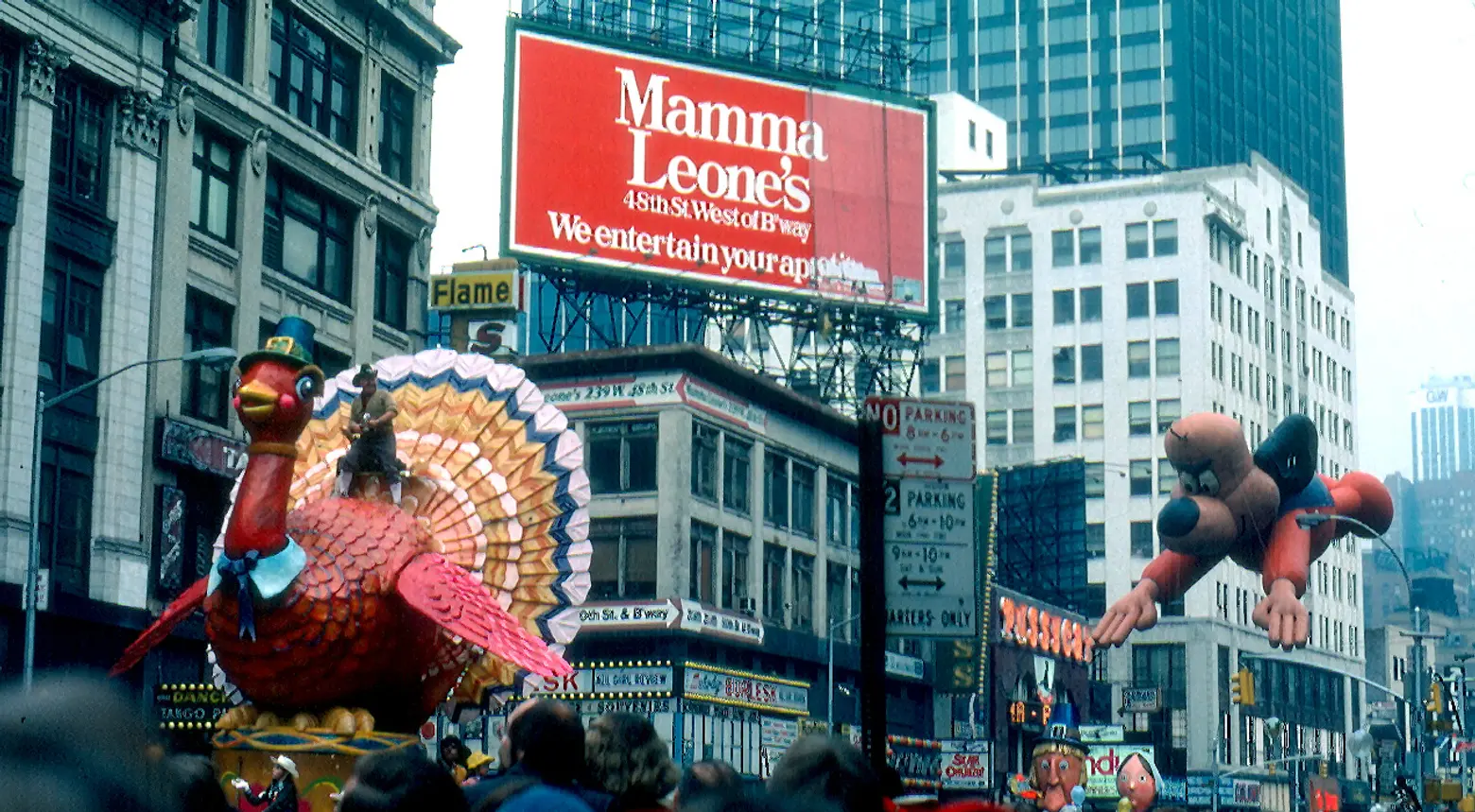 Image cc
Image cc
The 1970s
For a lot of people, this photo represents what we would now call “Old Times Square.” Not the giant turkey and Underdog balloon, but the dancing girls and cynical vibe of mean old Midtown. Besides the big billboard for Mamma Leone’s (it’s been closed since ’94, in case you were starting to get nostalgic), every sign seems to be for something the kids at the parade wouldn’t be allowed into.
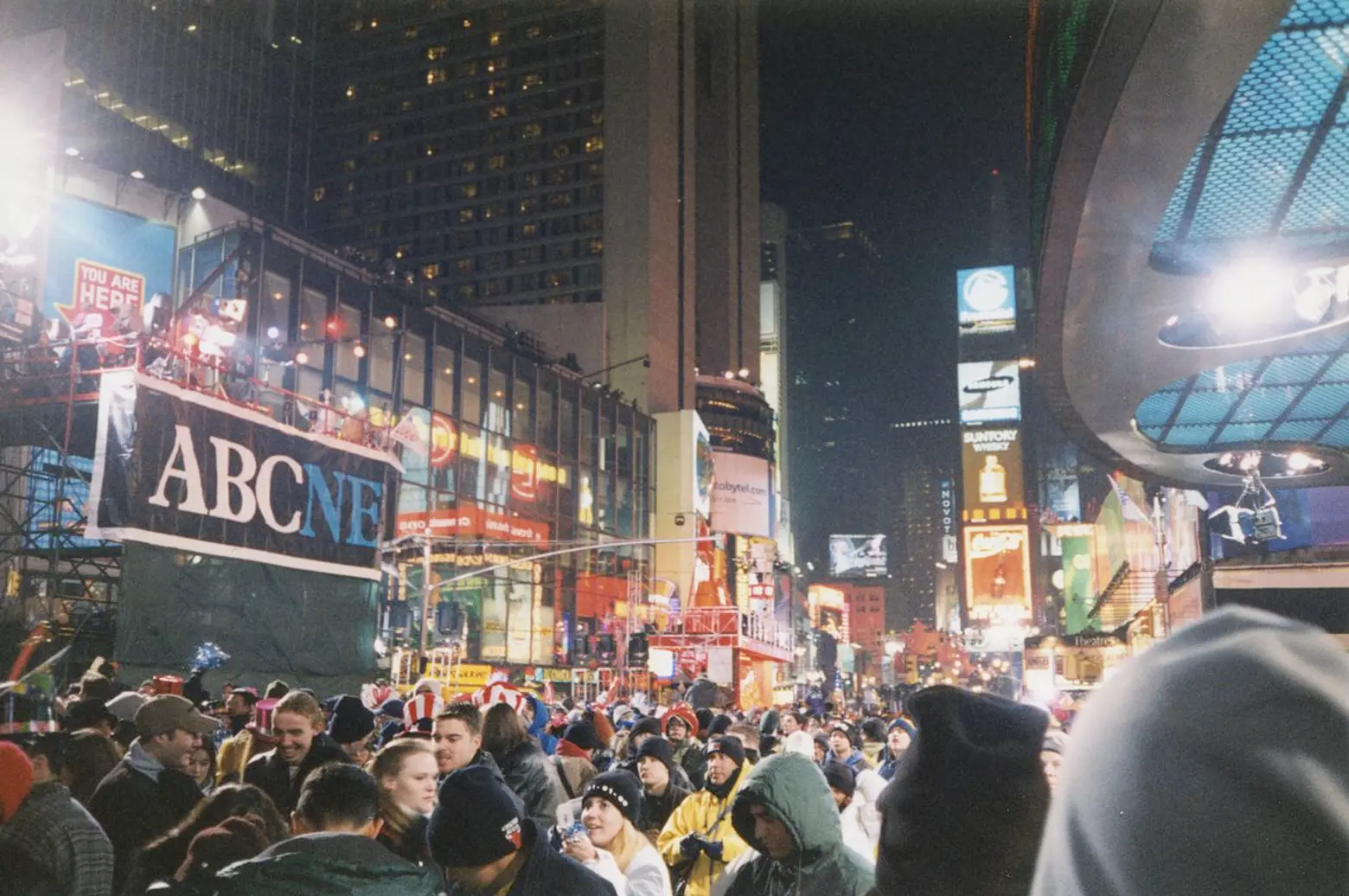 Image cc
Image cc
The 1990s-2000s
This photo shows a crowd of people getting over their Y2K panic on New Year’s Eve 1999. As you can see, everything has changed: Now Times Square is advertising “whisky,” not “whiskey.” Other than that, and the lack of suits being worn in the crowd, Times Square remains what it has always been: A mass gathering place where advertisements dominate the architecture of New York.
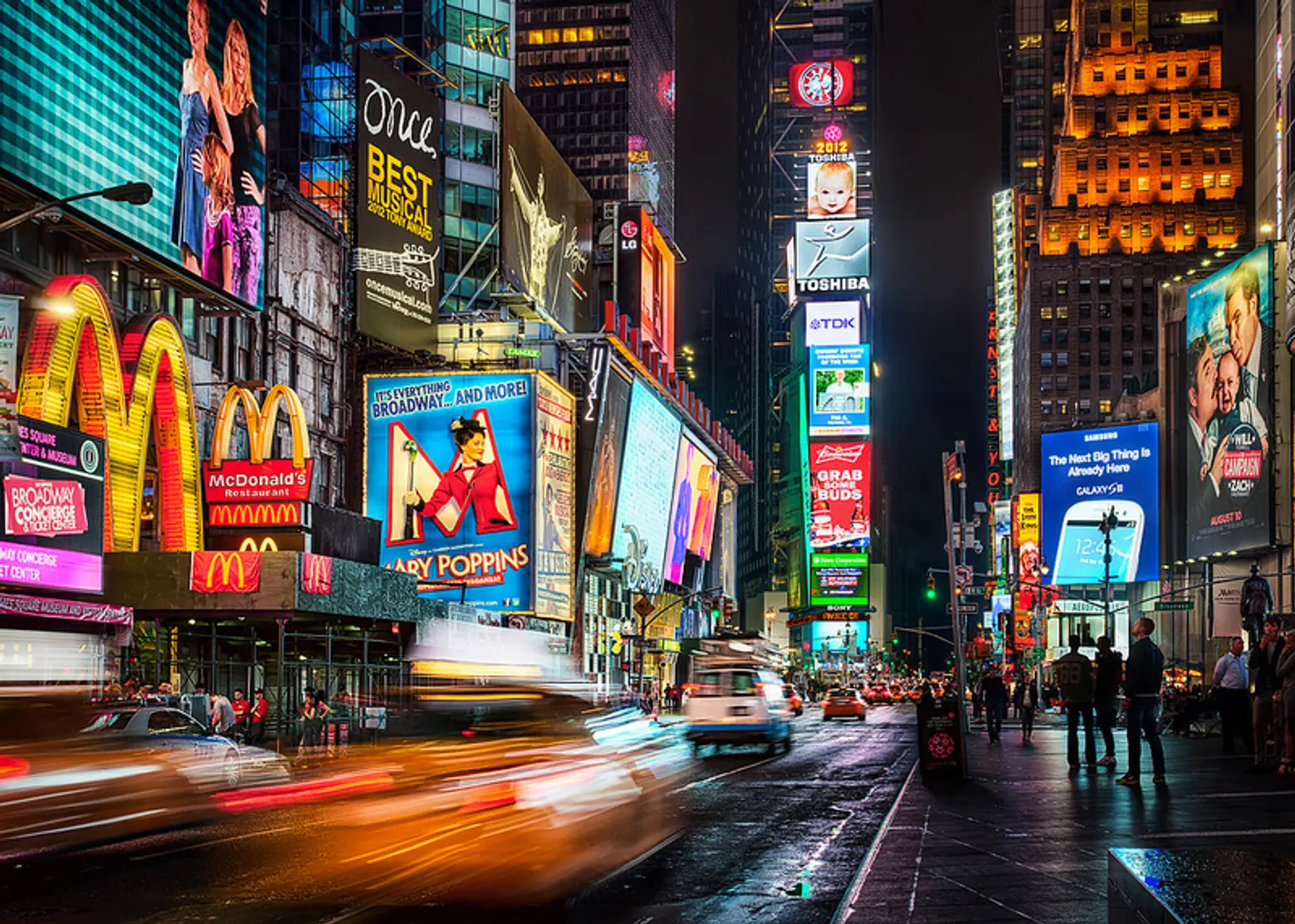 Image © Justin in SD cc
Image © Justin in SD cc


